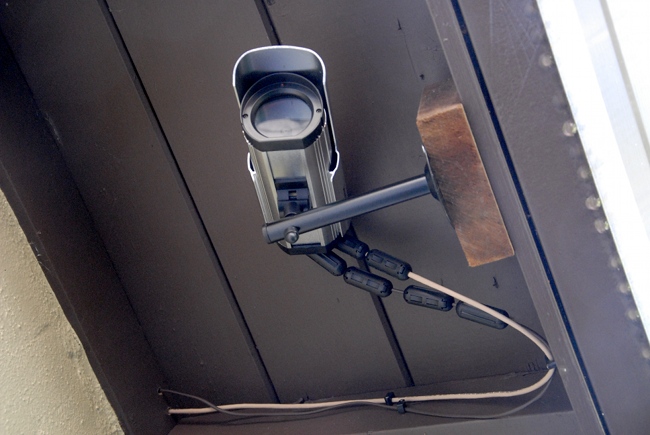In a previous post, I described finding and fixing a bad RFI source that was making it impossible to receive anything on 2 meters except the very closest repeaters. I eliminated a switching regulator for an LED fixture, and replaced it with a noise-free linear regulator. The improvement was amazing.
However, eliminating my worst noise source revealed another noise source, not as loud, but still enough to cause problems receiving one particular popular repeater in an adjacent county. There was a narrow spur of interference right on that repeater’s frequency.
Some detective work with a handheld receiver revealed the source: I have some Raspberry Pi computers with cameras, set up to monitor my home’s entry points, similar to this example. The Raspberry Pi requires 5VDC input, but I was a bit worried about voltage drop in making a long run of 5V wiring. So I run 12V to the camera, and have a 12V to 5V dc-to-dc converter inside the camera housing to power the Raspberry Pi. This converter puts out some noise at 146.910 MHz and about every 300 kHz or so above and below that. But 146.910 is the only frequency that bothers me much.
To mitigate the noise, I decided to try snap-on ferrite chokes on the power cable. I wanted something that would provide significant attenuation at 150 MHz. After some searching, I decided on Laird 28A0593-0A2 chokes, which I found at Digi-Key for 27.50 for a bag of 25, or just over a dollar apiece. They provide about 400 ohms of impedance at 100MHz.
In retrospect, these were probably narrower than ideal. The attenuation of a ferrite choke can be increased by looping the wire through it more than once, but my power cables were too thick to fit through more than once. Oh well, I can snap several of them on the cables.

Above is a picture, looking up into the eaves, of a security camera, showing the black sausage-shaped ferrites snapped onto the cables. I snapped four of them on each camera’s power cable, and two more on the ethernet cable. That cut the noise down to a tolerable level, making it possible to copy the repeater I was interested in.
My 2 meter noise problems are mostly under control now. Once 2m FM gets good enough, there’s not a whole lot of advantage to reducing the noise further. However, stay tuned. I may do some work on lowering my HF noise floor at some time in the future.